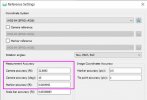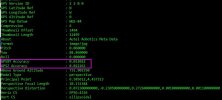- Joined
- Feb 22, 2022
- Messages
- 1
- Reaction score
- 0
- Age
- 27
I'm looking for a drone that can measure volumes with .1 - .3 centimeter accuracy for cut and fill operations. I was looking at the Phantom 4 RTK drone but it seems the vertical accuracy is about 2 cm. Are there any drone that can achieve the accuracy I need, or is it simply not possible?






